Care & Maintenance of Roses
Roses are among the most beautiful and versatile garden plants, available in various forms such as patio roses, shrub roses, ramblers, and climbers. Most roses make excellent cut flowers, and single-flowered varieties are particularly beneficial for pollinators, with some species being used by leafcutter bees to build their nests.
Roses are often thought to be challenging to care for, but understanding their needs is actually quite straightforward. The key aspects of rose care include planting, watering, fertilizing, pruning, and winterizing. With the right amount of water, sunlight, and occasional grooming, your roses should flourish.
Limiting the number of rose varieties you grow will help you avoid creating a disorderly and mismatched array. In this section, you’ll find everything you need to know about planting, growing, and maintaining Roses. From watering and soil requirements to pruning techniques and pest control, our comprehensive guides will help you keep your plant healthy and beautiful.
When & Where to Plant?
The best time to plant roses from a nursery pot is during the spring or fall. Planting in early spring, after the last frost, allows the rose to establish its roots before the intense heat of summer, providing optimal growing conditions and a full season for development.
Alternatively, planting in early fall gives the rose enough time to establish its root system before winter, with the cooler temperatures and increased rainfall creating ideal conditions for root growth. Regardless of the season, ensure the soil is well-drained and enriched with organic matter to support healthy growth.
Choose the Right Location:
- Choosing the right location for planting your rose bushes is essential for their healthy growth and blooming. To ensure the best display of flowers and robust plants, rose bushes need six to eight hours of sunlight daily, so it’s important to pick a spot with ample sunlight. Ideally, this should be an area that receives morning sun and afternoon shade.
- Insufficient sunlight can lead to fewer blooms and tall, spindly growth. Additionally, roses lacking adequate sun exposure are more prone to pests and diseases.
- Avoid highly exposed, windy locations, and provide enough space around the plant, about 60 cm, to prevent competition for water and light.
- In colder climates, planting a rose bush near a south- or west-facing fence.
Soil:
- Ensure the soil is free from weeds, rocks, or debris that can hinder root growth and development.
- Roses thrive in slightly acidic soil with good drainage.
- A loose, loamy soil promotes good drainage while holding enough moisture for your rose’s roots.
- It’s also crucial to test the soil pH level, as roses prefer a slightly acidic pH range of 6.0 to 6.5.
- This pH range allows roses to absorb nutrients efficiently and reduces the risk of diseases caused by fungal pathogens. You can test your soil’s pH level using a home testing kit, and adjust it accordingly with lime or sulphur products.
- Adding organic compost or aged manure improves soil drainage and fertility, helping to retain moisture and provide essential nutrients.
How to Plant in your Garden:
Properly planting your container roses ensures they get off to a good start.
- The planting hole should be deep and wide enough to accommodate the plant’s roots, and the area must have good drainage, as roses dislike wet feet.
- For each rose dig a hole roughly twice the width of the plant’s roots and the depth of a spade’s blade.
- Mix a generous amount of garden compost, peat moss, or other organic matter with the soil removed from the hole.
- Use some of this mixture at the bottom of the hole before placing the rose bush inside. In mild climates, the plant’s crown should be at ground level, while in cold climates, it should be 2 to 3 inches below ground level.
- Partially fill the hole with the soil mixture, add a slow-release fertilizer, and water thoroughly.
- Finish filling the hole with the remaining soil, water again, and mound loose soil around the canes to protect the rose as it acclimates.
- If planting multiple rose bushes, space them at least 3 feet apart to allow ample growing room as they mature.
For a detailed guide on planting check out this video:
Plant Companion Plants
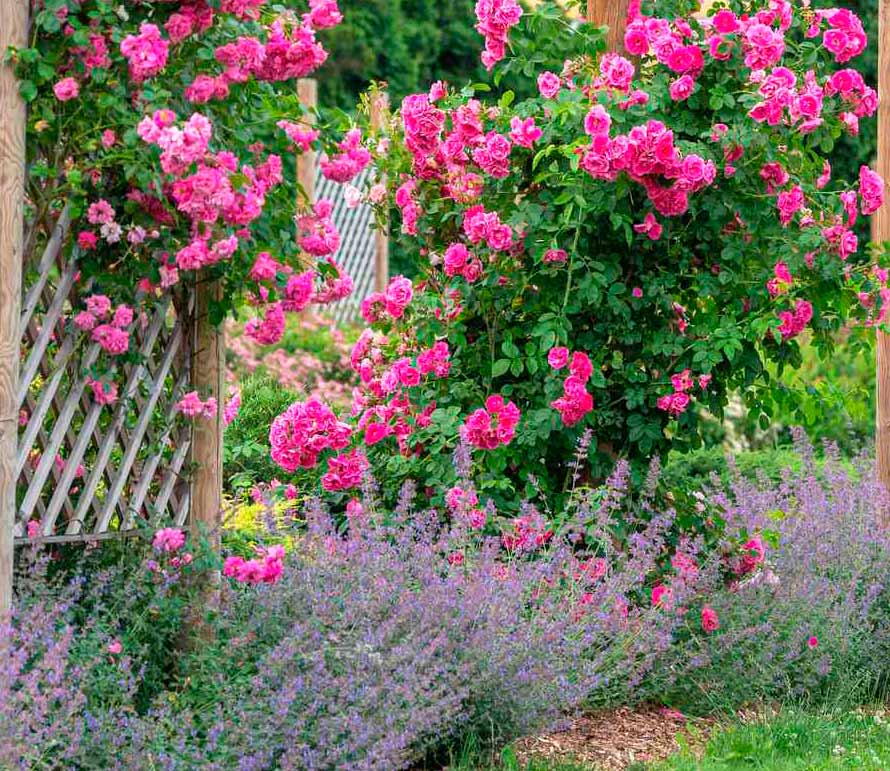
Planting companion plants alongside roses can help deter pests and attract beneficial insects.
Lavender repels harmful pests like aphids while attracting beneficial ones such as bees and butterflies, which aid in pollination.
Marigolds emit a strong scent that repels nematodes (microscopic worms) from attacking rose roots and attract ladybugs, which consume aphids. They contain a compound called thiophene that repels aphids and other insects.
Watering:
- From March to May water your newly planted roses every two or three days. If your roses are established water once a week.
- From June to September water your newly planted roses every other day, and your established roses once a week.
- From October to February, you’re unlikely to need water in the UK.
As a guideline, we suggest the following watering amounts per rose each time you water:
- Shrub roses: 5 Liters
- Climbing roses: 10 Liters
- Rambling roses: 10 Liters
- Standard tree roses: 10 Liters
- Roses in pots: 5 Liters
Fertilizer
- Wait at least six weeks after planting new roses before fertilizing them to give the roots time to establish.
- Sprinkle a balanced fertilizer specifically formulated for roses, such as a 10-10-10, around the base of the plant.
- After applying the fertilizer, water the plants thoroughly to help the nutrients reach the roots.
Established Roses
- Fertilize established roses in early spring as new growth begins and again in late spring or early summer after the first flush of blooms.
- Evenly scatter a balanced fertilizer around the drip line (the area under the outermost branches) of the rose bush.
- After fertilizing, water the plant thoroughly to help the nutrients reach the roots.
Container Roses
- Fertilize container roses every four to six weeks during the growing season. Water the plant thoroughly after fertilizing.
Pruning

Pruning roses is crucial for their health, vitality, and appearance. The primary time for pruning most rose varieties is during winter, except for rambling roses, which should be pruned in summer immediately after flowering.
The best time to prune most roses is from late winter to early spring, just as new growth begins. In the south of the UK, this may occur as early as January, while further north, new leaves might not appear until April.
Remove All Dead, Diseased, and Damaged Stems
Before pruning the healthy parts of your roses to encourage flowering. Removing the older wood helps concentrate the plant’s energy on new growth and flowers instead of wasting it on redundant stems.
Prune Out Any Crossing Stems
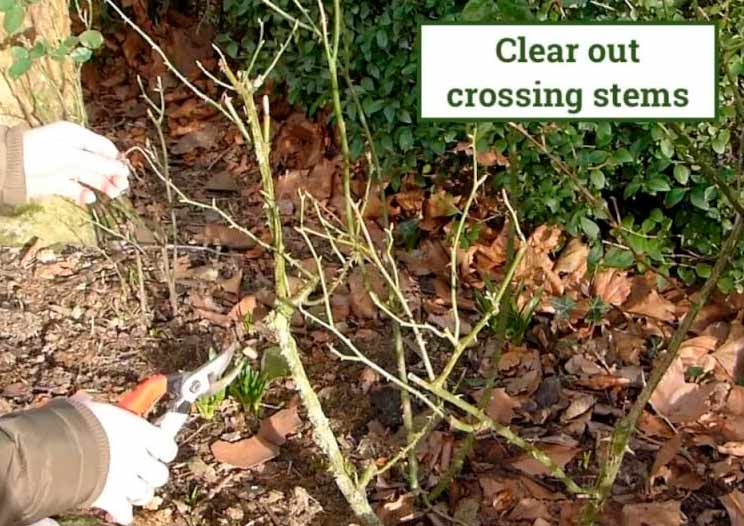
The goal is to achieve an “open goblet” shape, which ensures good airflow and an open structure for the rose bush. Crossing branches can cause stems to rub against each other and create congestion, restricting airflow.
Remove 1/3 of Last Year’s Growth
As a general rule of thumb, removing 1/3 of last year’s growth works well to shape a rose into a reasonable form. Don’t worry about cutting back too much. Roses are extremely resilient and will grow back even if you cut all of the stems right back to the base.
Mulch Roses After Pruning
Mulching provides your rose with a steady, slow-release feed as spring arrives, reduces competition from weeds, and helps retain moisture.
How to Winterize your Rose
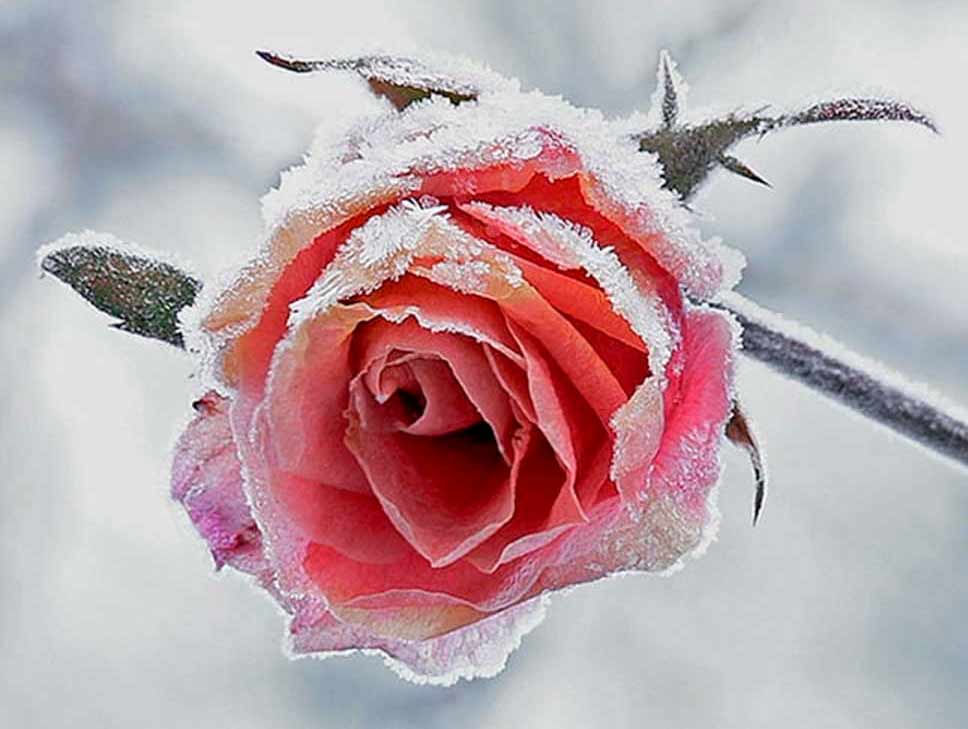
While roses may not be the ideal winter flower to plant, they can certainly survive and even thrive during the colder months. English Roses are tolerant and healthy by nature, and will cope with wintry weather without fuss.
- Cease fertilizing six weeks before the first frost. This will halt active growth and encourage the roses to enter dormancy for the winter.
- Mulch your roses by applying a thick layer of straw, leaves, or compost. This will help insulate the plant’s roots and protect them from frost. Be sure to cover the bud union, the point where new canes will emerge, or the graft, as these areas are particularly vulnerable to cold.
- Prune dead or long canes to prevent wind damage by cutting back long canes to about 1.5 meters and removing dead canes down to the living part of the stem. You can perform a more thorough pruning of the rose bush at the end of winter.
Roses Pests
Roses Diseases
Black spot
This is the most common rose disease. While a few black spots may not be overly unsightly, their presence should not deter you from growing roses. The disease typically becomes noticeable from mid-summer onward, though some varieties may suffer earlier, particularly after a mild winter. Black spot spores can be airborne and may transfer between plants via secateurs. When they find a suitable leaf, they initially appear as small, roundish black or dark brown patches. These spots quickly multiply, causing the surrounding areas to turn yellow and eventually leading to leaf drop.
Fallen leaves should be collected and burned, if possible, as spores can overwinter in the soil and cause problems the following year. In severe cases, spores may infect branches, putting the entire plant at risk. To manage black spot, remove affected branches and apply a winter wash with a mild sterilant. Several products are available that effectively combat fungal diseases like black spot. Regularly washing the plant with a hose can help remove spores.
Rust
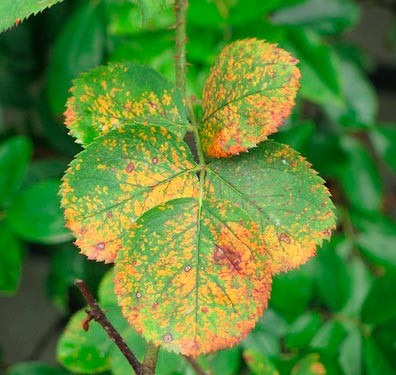
Rust thrives in warm, damp conditions and can severely damage roses if infestations are left unchecked. Early symptoms appear in early summer as small, bright orange pustules on the undersides of leaves. These pustules may go unnoticed until they enlarge and change colour to brown and eventually black.
If caught early, remove and burn infected leaves and monitor the plant for signs of re-infection. As with black spot, rust spores can overwinter on dead leaves or in the soil, so collect fallen leaves and treat the plant and surrounding soil with a fungicide while the plant is dormant.
Begin a regular spraying regimen early in the next season and maintain it consistently to manage rust effectively.
Powdery mildew
This fungus produces a greyish-white, powdery substance on young leaves, shoots, and buds. Infected leaves may become distorted, leading to some leaf drop, while flower buds may fail to open or produce poor-quality blooms. The disease can appear at any time during the growing season when temperatures are mild, and it tends to be most severe in shaded areas and during cooler periods.

Different rose varieties have varying levels of susceptibility to powdery mildew, so choosing resistant varieties is a key preventative measure. Since a film of water can inhibit infection, control measures may be less necessary during high-rainfall years and more important during drier late summer months. Regularly remove and destroy diseased leaves and canes throughout the growing season, and in the fall, rake up and dispose of fallen leaves to reduce the risk of infection.
Please Note:
Plants are living specimens and can experience stress during transportation. Since we transfer plants from our suppliers in Italy and Spain, where temperatures are much higher, they can suffer short-term stress from transportation and heat. Prior to delivery, we reduce the water intake of the plants to minimize the weight of the pots. This can lead to temporary dehydration during transit. Addressing dehydration promptly by watering the roses thoroughly and regularly can help revive the plant and restore its health. Rest assured, this process is standard practice among garden centres and has no long-term effects on the health of the plant. Upon delivery, please plant or repot your roses as soon as possible to ensure it is well-hydrated and ready to settle into its new environment.
Thank you for choosing our roses to enhance your garden! We hope you find our care and maintenance guide helpful. For any further questions or assistance, please don’t hesitate to contact us. We’re here to help you enjoy the full beauty and bloom of your roses!











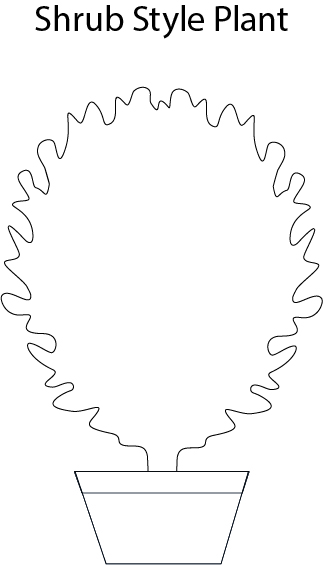 A rose bush with pale pink flowers, yellow pollen-producing stamen and bright red fruit berries.
A rose bush with pale pink flowers, yellow pollen-producing stamen and bright red fruit berries.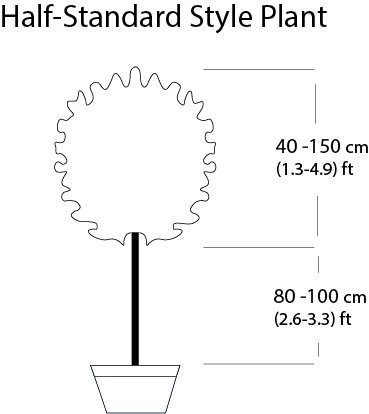 A very fragrant and very rare tea rose. Its blooms have one of the deepest purples on the market.
A very fragrant and very rare tea rose. Its blooms have one of the deepest purples on the market.